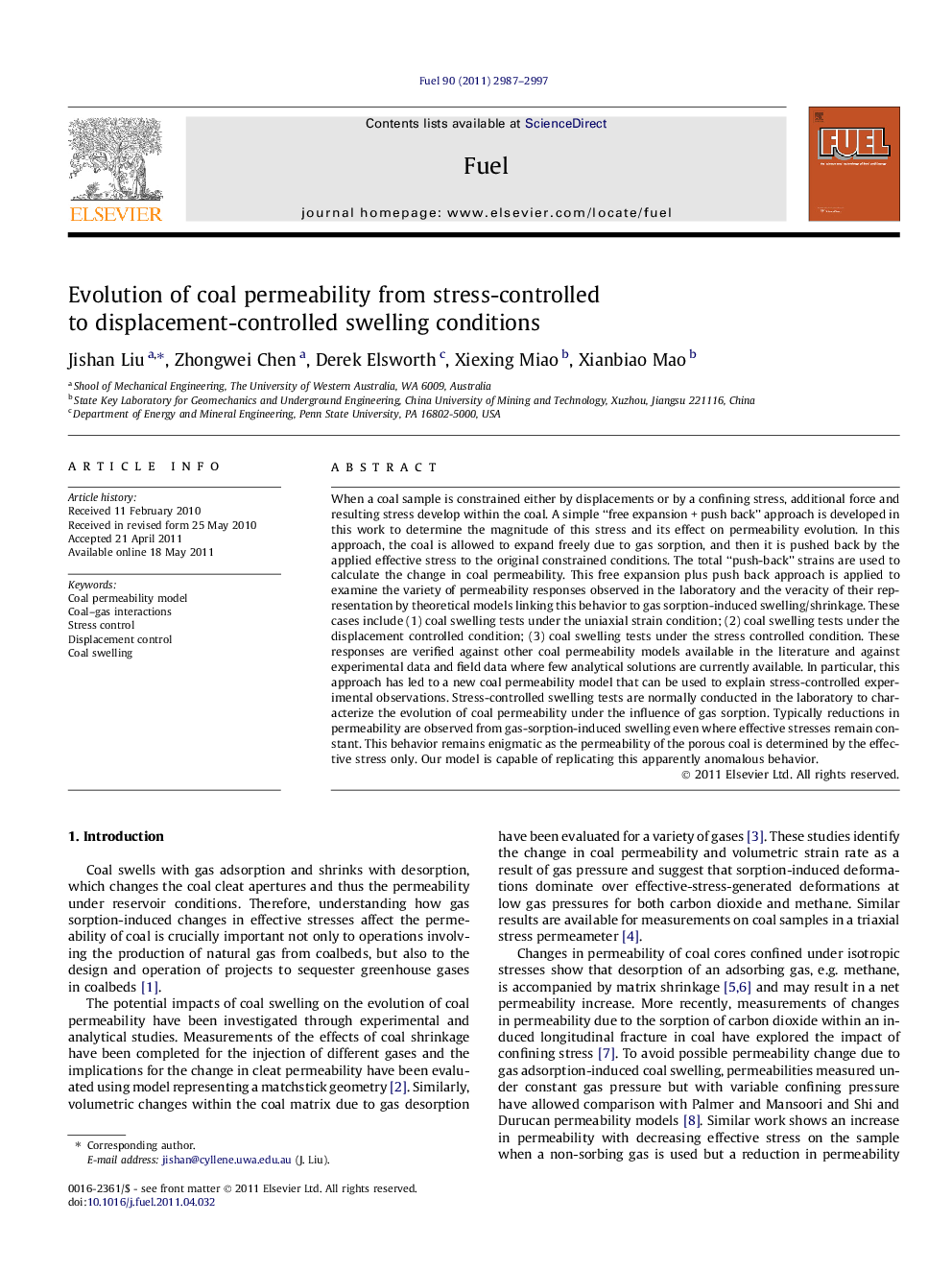| Article ID | Journal | Published Year | Pages | File Type |
|---|---|---|---|---|
| 206419 | Fuel | 2011 | 11 Pages |
When a coal sample is constrained either by displacements or by a confining stress, additional force and resulting stress develop within the coal. A simple “free expansion + push back” approach is developed in this work to determine the magnitude of this stress and its effect on permeability evolution. In this approach, the coal is allowed to expand freely due to gas sorption, and then it is pushed back by the applied effective stress to the original constrained conditions. The total “push-back” strains are used to calculate the change in coal permeability. This free expansion plus push back approach is applied to examine the variety of permeability responses observed in the laboratory and the veracity of their representation by theoretical models linking this behavior to gas sorption-induced swelling/shrinkage. These cases include (1) coal swelling tests under the uniaxial strain condition; (2) coal swelling tests under the displacement controlled condition; (3) coal swelling tests under the stress controlled condition. These responses are verified against other coal permeability models available in the literature and against experimental data and field data where few analytical solutions are currently available. In particular, this approach has led to a new coal permeability model that can be used to explain stress-controlled experimental observations. Stress-controlled swelling tests are normally conducted in the laboratory to characterize the evolution of coal permeability under the influence of gas sorption. Typically reductions in permeability are observed from gas-sorption-induced swelling even where effective stresses remain constant. This behavior remains enigmatic as the permeability of the porous coal is determined by the effective stress only. Our model is capable of replicating this apparently anomalous behavior.
